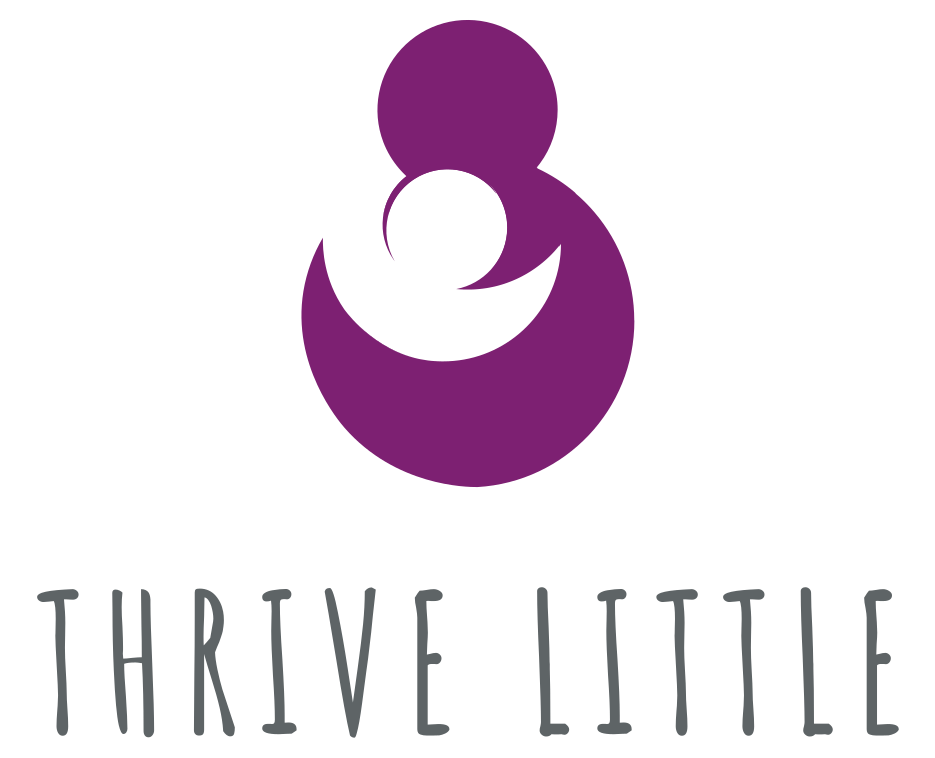Babies are born with the reflexive ability to grasp. While a newborn grasping your finger will melt any new parent’s heart, your 3-week-old baby isn’t doing this intentionally. Around 2 months of age, a young baby’s grasp becomes more intentional. And around 3-4 months of age, they will gain the ability to reach out for things to grasp.
Once babies are able to grasp objects, they can also drop them. But there is a difference between a baby dropping an object versus intentionally opening to their hand to let it go. The latter skill is referred to as voluntary release. Voluntary release begins around 8-9 months of age. At this age, babies should achieve the developmental milestone of dropping objects on purpose. And by 9-10 months they will be learning how to release small items into a specific target.
Baby’s manual dexterity evolves significantly in their first year. Over time your child will go from intentionally dropping food from their highchair, to helping put toys away, to putting puzzle pieces in a puzzle. All of these fine motor activities require the skill of voluntary release. See below for fun activities recommended by an occupational therapist that will develop your child’s fine motor skills.

Activities for Grasp and Release
The following activities are listed by level of difficulty, easiest to most difficult. The easier activities are great for babies ages 6 to 10 months of age. By 18-24 months, your child should be able to do the most difficult. All of the ideas below are great activities for fine motor development.
- Intentionally dropping objects or putting objects down
- Release objects into a large target (such as a box or basket)
- Release objects into a small target (such as a small cup or bowl)
- Ball drop toys work on voluntary release of small objects
- Ring stackers are great for target practice
- Pegboards
- Start with large pegs like this
- When they are ready you can move onto smaller pegs like this one from Learning Resources
- Stacking cups like this super affordable option from The First Years and works on different skills like stacking, pouring, and fitting them inside one another
- Stacking blocks
- Larger blocks like these are easiest for little fingers
- Smaller cubes like these ABC building blocks are great as they get closer to age 2
- Putting a ball into a basketball hoop is a great way to develop hand-eye coordination
- Toy piggy bank with large coins
- Shape sorters-container filled with different shapes
- Circles are the easiest shape and shapes with the most edges (such as stars) will be the most challenging
- The fewer shapes, the easier it will be
- This 3-piece shape sorter from Battat is one of my favorite young toddler toys. It makes a fun sound when the shape goes down, which is a motivating factor!
- Puzzles
- Start with large puzzle pieces and only a few pieces like this 3 piece simple shape puzzle
- As their skills improve, you can offer puzzles with more pieces, smaller pieces, and more complex shapes like this farm theme puzzle from Melissa & Doug
- Releasing tiny objects like cheerios (tiny non-food objects are a choking hazard for babies) or pom poms for toddlers into ice cube trays or an egg carton

Other Activities That Support Release and Grasp Skills

If your baby is having a hard time with voluntary release, practice other lower level fine motor skills that typically come before voluntary release. Use a variety of objects during everyday activities to get in regular practice. Some good ideas to try include:
- Reaching and grasping toys
- Banging and shaking toys
- Transferring toys from one hand to another (you can encourage this by offering a second toy to the same hand already holding a toy)
- The O-ball is my favorite toy to practice transferring with
- Taking smaller items out of a container (wooden blocks, balls, even pairs of baby socks!)
- Dumping containers out (and you can model how to put them back in!)
If your baby is having a hard time reaching out for toys, read our article How To Help Baby Reach for Toys
Letting go of an object on purpose may seem like a simple skill, but like all skills babies learn, it is actually quite complex and involves several different skill areas coming together! While it may seem just like a fine motor activity, it also requires strong cognitive skills as well. Babies also need to have strong gross motor skills to hold their body upright in order to manipulate small objects.
Of course all babies develop at their own pace, but if your baby is 10-12 months old and still not able to release objects on purpose, talk to your healthcare provider and have them evaluated by an occupational therapist! Questions? Contact us here!
This post contains affiliate links
- Baby Blocks: 10 soft and squeezable building blocks with modern colors and embossed designs!
- Learning Toy: These educational blocks feature numbers 1 through 10, different animals, shapes, and…
- Building set comes with 80 big building blocks designed to be durable
- The #1 preschool building toy in the U.S.A.
- 50 ALPHABET AND 123 BLOCKS: The Melissa & Doug Deluxe Wooden ABC/123 Blocks Set features 50…
- EXCEPTIONAL DEVELOPMENTAL TOY: Our ABC blocks are excellent for toddlers and preschoolers to develop…
Best Fine Motor Toys for 1 Year Olds
How to Help Baby Reach for Toys





